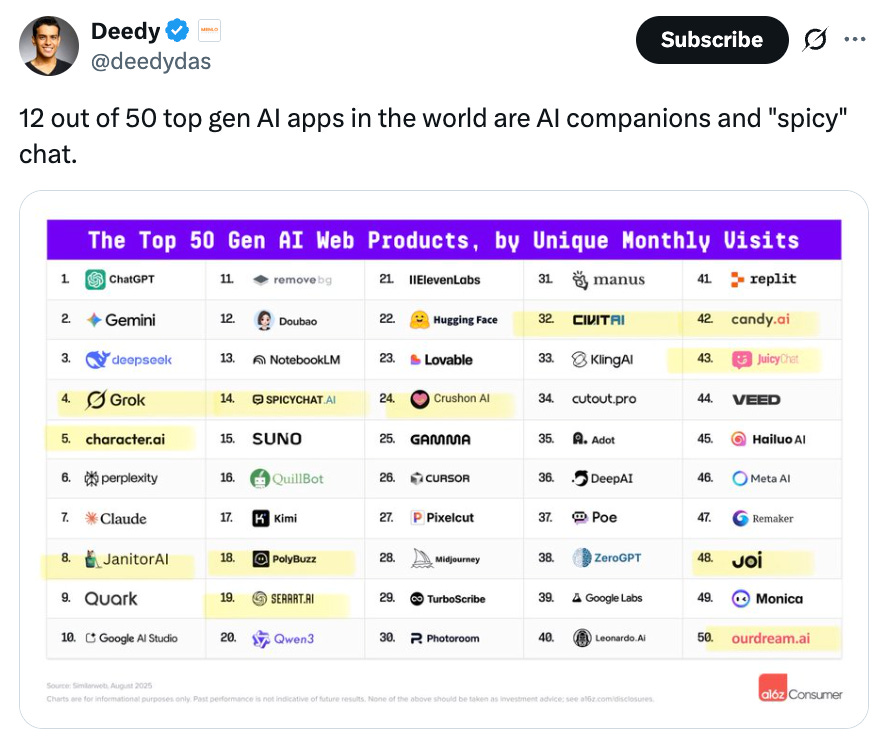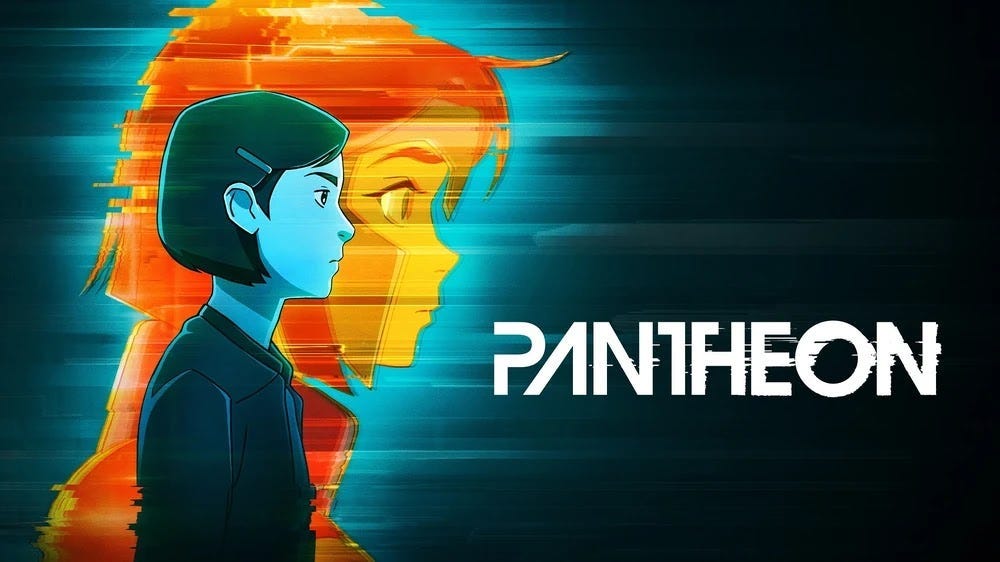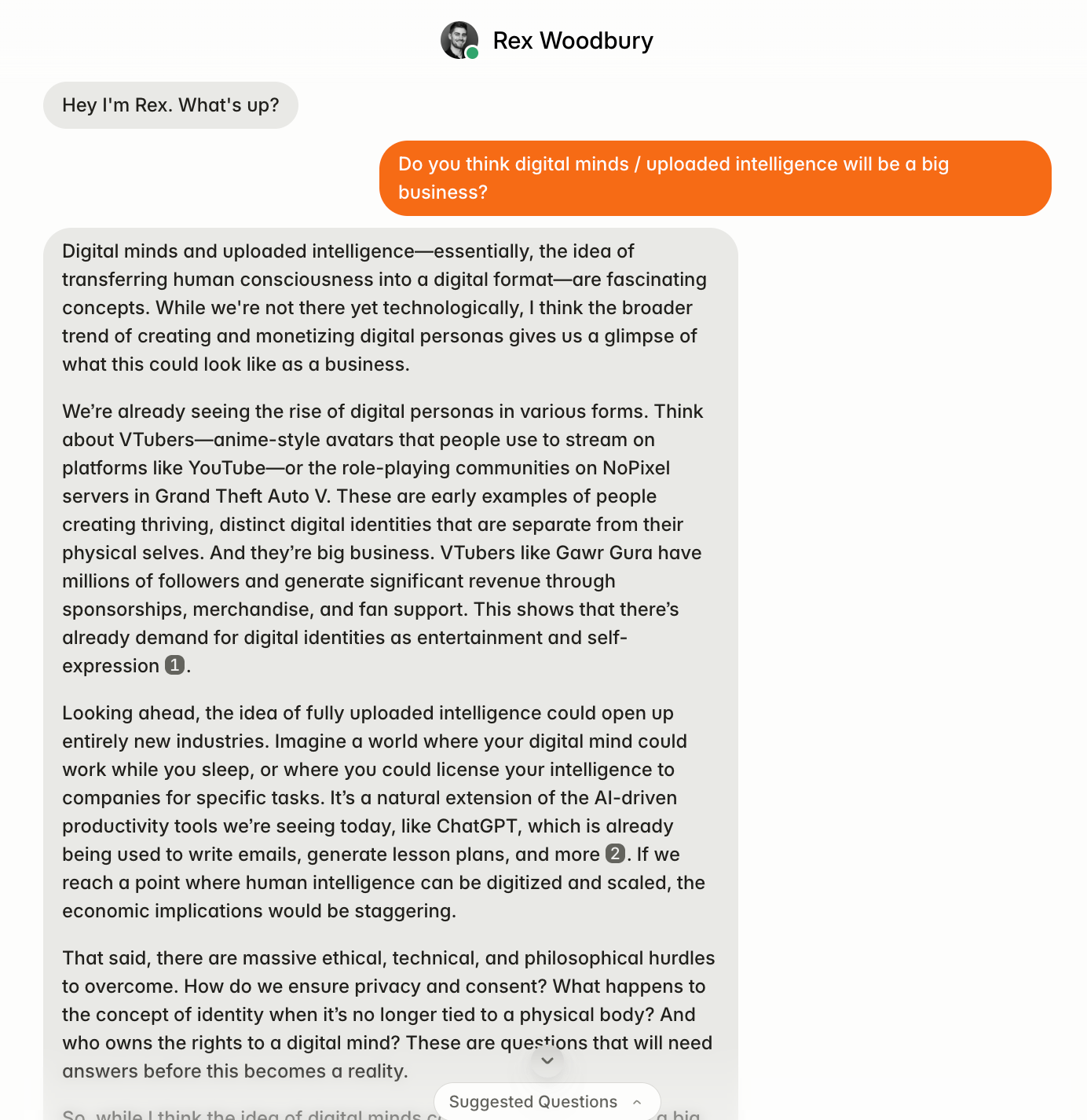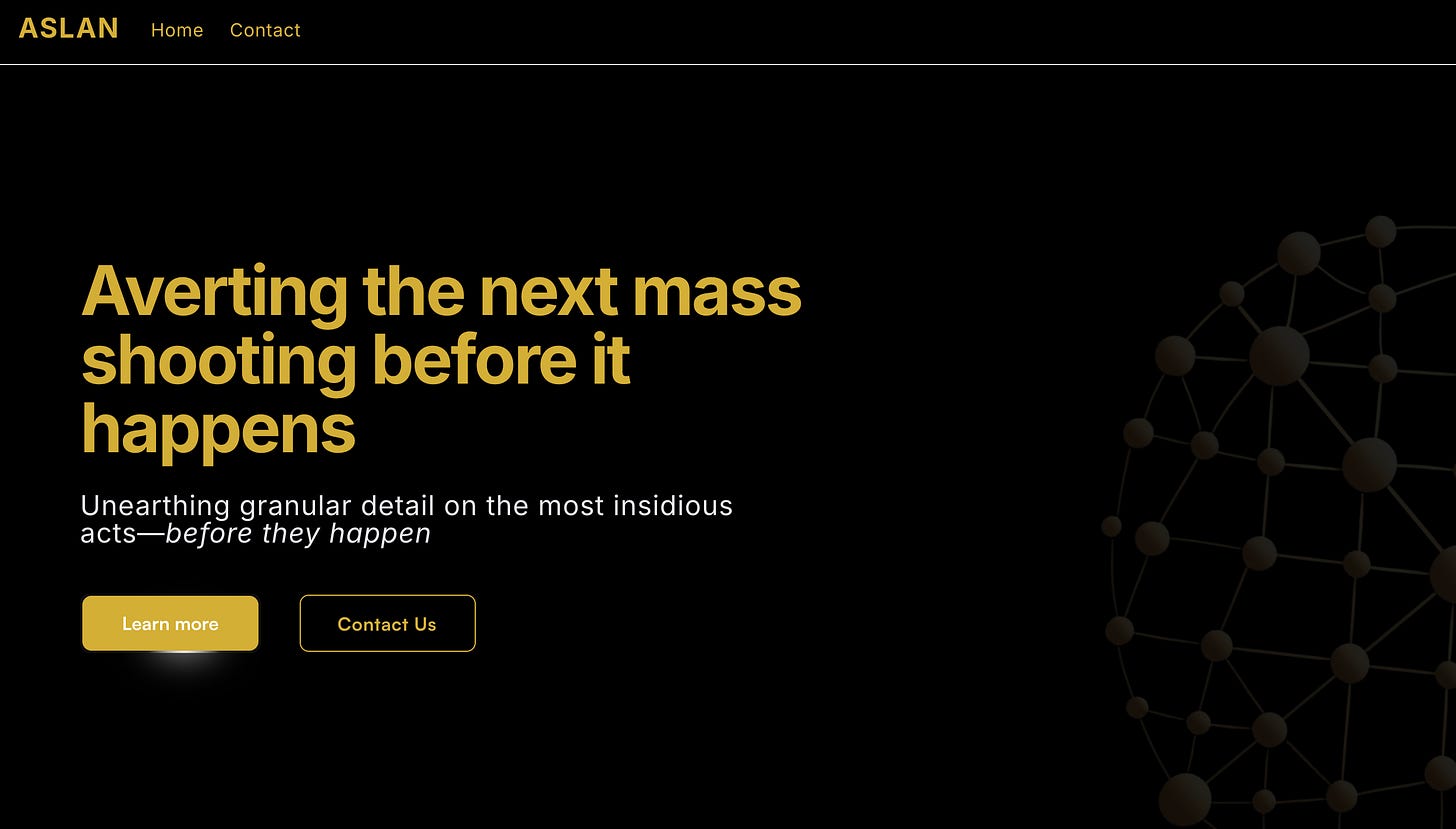Lessons from Sci-Fi
When Sci-Fi Predicts Startup Innovation
Weekly writing about how technology and people intersect. By day, I’m building Daybreak to partner with early-stage founders. By night, I’m writing Digital Native about market trends and startup opportunities.
If you haven’t subscribed, join 70,000+ weekly readers by subscribing here:
Lessons from Sci-Fi
The film Her came out in 2013, but the story is set in 2025. Turns out, Her was pretty prescient. In the year 2025, thousands (millions?) of people have romantic relationships with AI chatbots. These chatbots don’t have Scarlet Johansson’s voice—though they almost did!—but the rest is spot-on.
NSFW chat was one of the first killer use cases for AI. We’ve written about this extensively in Digital Native—AI Friends Are a Good Things, Actually (April 2025); Maslow’s Hierarchy of Startups (March 2023)—and many publications have done deep-dives into the world of AI romance. One example headline from a 2023 piece in The Cut:
(The TL;DR: many people fell in love with their Replikas, then were left grieving when Replika banned NSFW chat 😕.)
Even today, nearly three years since ChatGPT’s launch, AI companions and “spicy” chat continue to feature heavily in the top AI applications:

Clearly, sci-fi has done a good job predicting modern day.
We shouldn’t be surprised by this. This is a recurring theme: we can learn a lot from fiction about what the future might look like. If you work in the startup or venture worlds, you could argue that sci-fi books are actually the best “business” books you can read. Sure, you should still read The Innovator’s Dilemma and The Lean Startup—but maybe also pick up Neuromancer and Snow Crash.
This week’s piece looks at three of my favorite works of sci-fi, and modern innovations that are stemming from them:
Pantheon and Uploaded Intelligence
Minority Report and Predictive Policing
“Hated in the Nation” and Drone Warfare
This isn’t an exhaustive list, by any means, but it gives a sense of how fiction foretells reality, getting our minds thinking about what new sci-fi creations will come next.
Let’s dive in 👇
1) Pantheon and Uploaded Intelligence
Pantheon is a tremendously underrated show on Netflix. I won’t spoil anything, but the basic premise is: a tech corporation figures out how to create Uploaded Intelligence (UI) by scanning a person’s brain, then uploading their consciousness to the cloud.
Naturally, the corporation abuses UI. As an example: they upload a world-class hedge fund trader’s mind, then “imprison” her consciousness to make highly-profitable trades for eternity. The series tells the story of the various ethical and philosophical repercussions surrounding UI.

Of course, sci-fi tends to lean dystopian. In the real world, any replication of a human mind should have tight guardrails and specific use cases. More rosy portrayals in sci-fi (though still somewhat uncomfortable) come in the Black Mirror episodes “Be Right Back” and “San Junipero.”
“Be Right Back” tells the story of a grieving widow who learns of a service that lets her chat with her deceased lover; the tool digests text messages and social media history to learn how her partner would have responded. It’s a bit disturbing, yes, but also touching. (We just saw a major controversy around something similar with a Parkland shooting victim “brought back” by AI.)
“San Junipero,” meanwhile, tells the story of two women who fall in love after uploading their consciousnesses to a simulated reality that the elderly can inhabit after death. It’s widely considered Black Mirror’s most (maybe only) optimistic episode.
I prefer Pantheon because of how in-depth the show explores the concept of uploaded intelligence. And we’re now starting to see Pantheon become reality, as startups build digital clones of our minds.
I’ve written before about Delphi. My Delphi is trained on my writings and podcasts—it does a pretty good job answering questions the way I would:
A little long-winded, sure, but directionally correct.
We’re also seeing startups build always-on, ever-evolving AI clones: living, breathing replicas of ourselves that learn and iterate and improve as we go about our lives. This is very interesting to me: memory is a critical piece of an AI, and these products will update in real time to always have perfect recall of our knowledge and lives.
Sentience, for example, calls itself a “memory prosthetic” and uses this analogy: “Like 1-password for your knowledge, your Sentience retrieves exactly what you need across every app and AI.”
As you can imagine, the use cases are various:
I could ask my own clone about a meeting I (we?) took last week, because I forgot key details.
I could ask my brother’s clone what day he arrives for Thanksgiving, if I know he’s at work and doesn’t want to be bothered.
I could ask famous VCs for their perspective on a deal I’m looking at.
And so on. You get the picture. ChatGPT and others have popularized the concept of talking to an AI. But what about talking to AI versions of ourselves? Replicas of our minds will be commonplace in a few years.
2) Minority Report and Predictive Policing
I remember watching Minority Report in theaters and thinking Tom Cruise’s augmented reality computer screen, which hovers in mid-air and is controlled by his hands, was just about the coolest thing ever.
The film, set in the year 2054, stands the test of the time as a thought-provoking thriller jam-packed with futuristic innovations.
The most memorable innovation is the Precog. Short for Precognition, Precogs are beings who possess psychic abilities to see events in the future. In the film, Precogs are used by the police force to predict murders and arrest criminals before crimes happen.
Today, we see predictive intelligence becoming commonplace across police work.
Palantir, of course, helps law enforcement agencies detect crime patterns. Palantir was the best-performing stock in the S&P 500 last year, ending the year +340% (it currently has a $400B market cap).
A younger example: Aslan helps police forces avert mass shootings before they happen:
From 2048’s blog post on Aslan:
We’re living in a time when public safety is being redefined in real time.
Acts of violence are more insidious, more unpredictable, and happening with a frequency that feels unrelenting. The tools we have — from camera-based detection systems to policy debates — are mostly reactive, built to respond after the fact.
But what if we could intervene before the sirens ever sound?
Aslan is building an intelligence layer that helps law enforcement surface early warnings signs before violence occurs. Sound familiar? We don’t quite have Precogs—no supernatural beings just yet—but technology is shifting public safety from reactive to proactive.
3) “Hated in the Nation” and Drone Warfare
My favorite episode of Black Mirror is “Hated in the Nation.” Again, I’ll be light on the spoilers in case you haven’t seen it (in which case: go watch it!). The basic premise is: real bees have gone extinct, and mankind has created robotic bees in their place. These are called Autonomous Drone Insects (ADIs) and were built to fill the ecological gap left by natural pollinators, ensuring crops and plants will stay healthy.
Here’s a robot bee:
Naturally, things go wrong. A hacker takes over the ADIs and weaponizes them. The bees begin to murder people, and the police need to track down the hacker.
The episode is a commentary on many topics. It’s especially timely in how it treats social media mobs, drawing comparisons to this week’s Charlie Kirk news: The Charlie Kirk Data Foundation, an anonymous site initially called “Expose Charlie’s Murderers,” is set on tracking down people celebrating Kirk’s murder; the organization has already gotten hundreds of people fired from their jobs.
But that’s a digression (you’ll understand it after watching the episode)—the obvious comparison to ADIs: drones.
We’ve seen a lot of innovation in drones in recent years. At my prior firm, Index, we invested in BRINC, which builds drones for police and public safety agencies.
A more recent example—and one that specifically reminded me of “Hated in the Nation”—is Leonidas from the startup Epirus. Leonidas is a counter-drone system. At a recent demo, a swarm of 49 quadcopter drones converged over an Indiana National Guard base. Then all 49 crashed into a grassy field. Leonidas had overwhelmed their circuits with electromagnetic waves. Spectators applauded.
When I read about Leonidas, I thought about killer bees and a police counter-attack. (I also thought about Battlestar Galactica, and when the Cylons overwhelm the human Colonial Fleet with a coordinated hacking attack that disables the fleet’s networked systems.) Drones are becoming a mainstay in defense and public safety, just as sci-fi has foretold for years.
Final Thoughts
There are many more examples here. Sci-fi has a long history of coming up with futuristic stuff that eventually works its way into everyday life.
Ready Player One had people buying virtual clothes for the metaverse; today, people buy skins for Fortnite and Counter-Strike.
In Westworld, hosts impersonate human voices; companies like ElevenLabs now can replicate any voice from seconds of audio. We’ve seen James Earl Jones pass away, while AI preserves his Darth Vader voice forever.
Gattaca and The Expanse both imagined genetic sequencing and manipulation. Today, we have CRISPR, mRNA vaccines, and tremendous funding in AI + biotech (see: this week’s $235M Series A at ~$1.5B post for Lila Sciences, which is building autonomous labs for life sciences experimentation).
You get the picture. It’s a good thought experiment: what do we see on screen or on the page that could make its way into our lives, sooner rather than later? Hopefully our real-world versions are less dystopian than depictions in popular culture.
Sci-fi may look like fantasy, but more often it’s a product roadmap or business plan for the future. The company Palantir is named for the famous Seeing Stones from Lord of the Rings, which were forged by the Elves of Valinor and which Saruman and Sauron use in the books / movies. (Really nerded out on that one.) In many ways, works of science fiction are our Palantirs, helping us see what’s to come.
Thanks for reading! Subscribe here to receive Digital Native in your inbox each week:
















